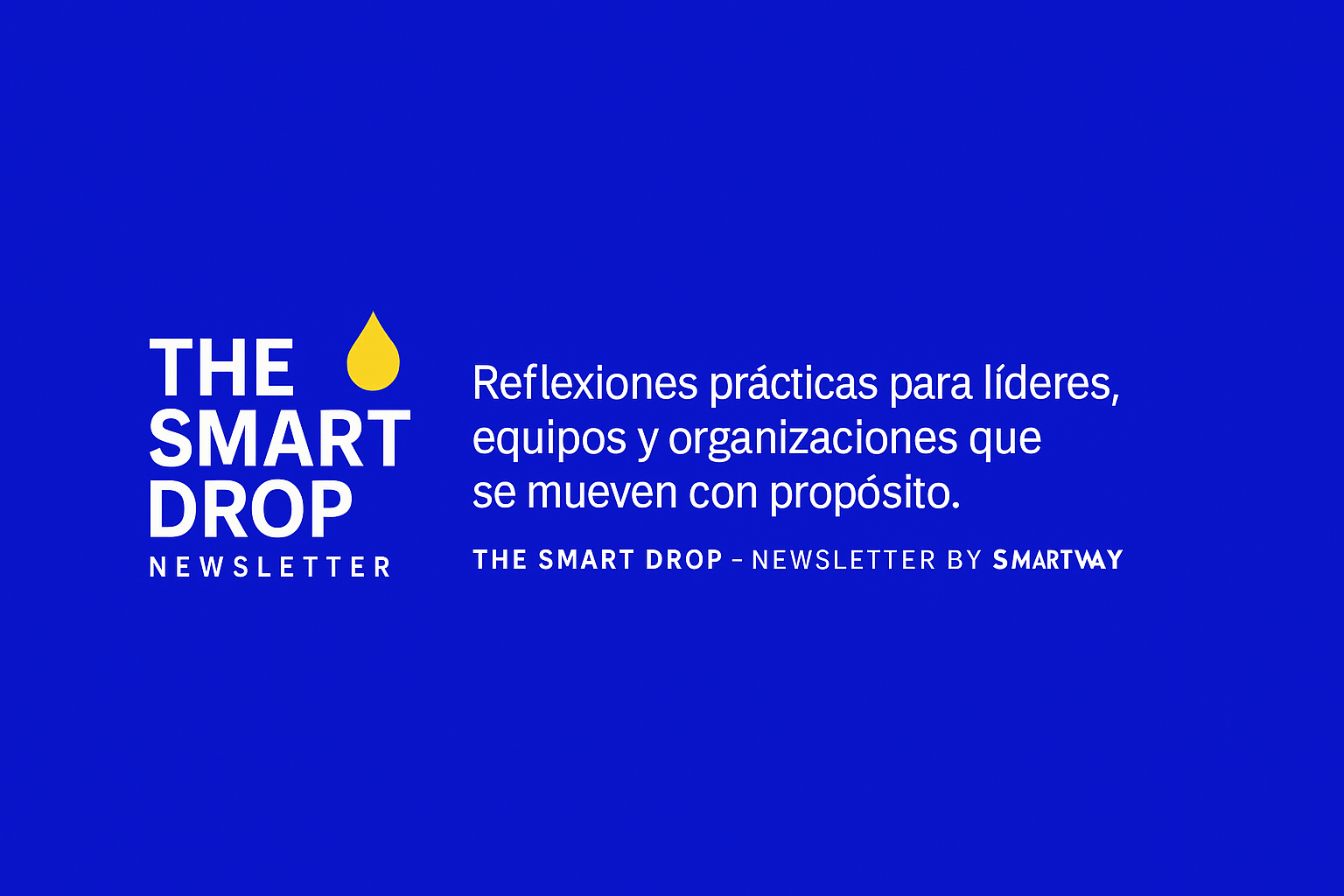
Agile with OKRS, sounds like a good combo! Sounds like a good synergy…
We are looking for winning synergies!
What a word: synergies, it has become very fashionable to use it to refer to elements that can complement each other.
Lately, we have seen companies deciding to promote OKRs. In many cases, the choice to try OKRs is made after the use of specific Agile methodologies that did not work for the organization’s Agile transformation.
But, but… if it didn’t work before, why should it work now with OKRs?
Introduction to OKR in the Agile Context
Let’s see how we can maximize the impact of OKRs as a lever for organizational transformation.
What is an OKR in Agile? Definition and Purpose
In today’s fast-paced world, organizations are constantly looking for ways to improve their performance and agility.
This is where OKR (Objectives and Key Results) join the Agile game. OKRs in an Agile context are not just a methodology; they are a catalyst for change.
Before reading on, if you don’t know what OKRs are, I recommend this reading: Introduction to OKRs.
Let’s go back to OKRs Agile. Actually, the idea of OKR Agile is a pleonasm!
Pleoqué? A pleonasm is a figure of speech that occurs when we use 2 words that come to mean the same thing, but one does not add valuable information to the other. In this case, it is in the nature of OKRs to be “Agile”, i.e.:
- OKRs are value-oriented. They serve to tell us what is important
- Adaptive: they are reviewed from time to time and adapted to changes in the environment or to the results obtained.
- They are collaborative: they are established as a team and spread by ensuring the alignment of all parties involved.
- They seek continuous improvement and even seek to quantify it through metrics such as KRs.

OKRs have a simple but powerful purpose: to set clear and measurable objectives aligned with the company’s vision, while maintaining the flexibility and rapid response that characterizes Agile.
What are OKRs in Agile: Identifying their Impact on Agile Culture
OKRs are not just a goal-setting tool; they are a culture influencer. Its implementation can have a significant impact on how teams approach their tasks, interact with each other, and engage with the organization’s mission. Here, we will look at how OKRs can transform the Agile culture in a company.
The Synergy between Agile and OKRs: A System for Continuous Improvement
Agile and OKR share a common goal that is essential for Agile transformation: continuous improvement.
This synergy creates an environment where adaptability and clear objectives not only coexist, but enhance each other.
By integrating OKRs into the Agile framework, organizations can better focus their efforts, ensuring that each sprint and feedback loop contributes to broader goals.
A great advantage is that we do not need to create new events to the existing ones if we have Agile governance, we can use the existing ones to integrate the “synchronizations” of the OKRs governance.
Understanding the Meaning of Agile OKR in Practice
Implementing OKRs in an Agile environment goes beyond theory.
It requires a practical understanding of how these two concepts interconnect on a day-to-day basis.
OKRs must be flexible to adapt to Agile’s rapid iterations, and in turn, the Agile framework must be robust enough to sustain and drive these objectives toward successful execution.
OKR’s principles align closely with those of Agile: transparency, adaptability, and a focus on delivering value. The benefits of this alignment are manifold:
- greater clarity of objectives
- best inter-team alignment
- a renewed focus on measurable and meaningful results.
OKRs to guide Agile transformation
Do the OKRs really serve as a guide for our Agile transformation?

The answer is quick and easy: YES, of course.
Will I succeed in my Agile transformation if I use OKRs?
Here it gets complicated, as the great Pau Donés said: It depends!
what does it depend on?
Whether we understand how to combine them, especially at the strategic level.
Context of Agile transformation
In my experience one of the biggest challenges in Agile transformations is the strategic part. There is one key question that will shape EVERYTHING we do… EVERYTHING!
The question is simple to ask and often complex to answer:
Why do we want to transform ourselves?
The answer to this question will give us the first strategic objective which in turn will be our first “O” of the OKRs.
Watch out! We may have several answers to the question: more OKRs!
But let’s keep in mind that more is not necessarily better, as it could make us lose focus and turn the OKRs process into something very tedious!
In case of having more than 3 Objectives, it would be advisable to work on them, prioritize them, combine them in order to have a manageable number.
How OKRs Reinforce Culture and Objectivity in the Enterprise
OKRs not only help achieve goals; they also play a vital role in strengthening corporate culture and objectivity. We will delve into how OKRs can reinforce these aspects, improving morale, clarity and effectiveness throughout the organization.
Agile Transformation OKRs: Catalysts for Change
In the Agile transformation journey, OKRs act as catalysts for change. They provide a clear framework for defining what success means in the context of Agile and how it can be measured and achieved. They facilitate the transition from one organization to a more agile one, keeping everyone on the same page.

Strategic vision of Agile transformation
One of the challenges observed when organizations start their evolution (or transformation) process is the lack of metrics. And it is a common mistake:
It is as important to evolve as it is to show how we evolve.
These metrics must be linked to transformation objectives and we can do this in the form of KRs.
There will be a day when someone will want to know all the time/money invested in the transformation it has brought us. Then we will have a problem justifying the continuation of the project if we do not have metrics to support the impact of all the efforts and actions taken.
Implementing OKR in Agile Teams
The use of OKRs should be spread throughout the organization so that everyone is clear about the objectives we are pursuing and how we intend to achieve them. In this way we ensure alignment in the organization’s efforts.
In the next section we will look at how OKRs fit in with Scrum teams.
OKR Agile Scrum: Integration with Development Methodologies
Scrum, a very popular framework within Agile, aligns perfectly with OKRs. Integrating OKRs into Scrum involves defining objectives that are specific, measurable, achievable, relevant and time-bound (SMART), and that are synchronized with Scrum sprints.
As a result of the “Sprint Plannings” we must have the objectives that the team intends to achieve in that iteration, as well as the plan to achieve them. These Objectives must be TOTALLY aligned with the team’s KRs, or with the Objectives in some cases.
This combination ensures that each iteration contributes to a broader objective, maximizing efficiency and focus. And allowing the team to see their impact on the organization, which generates extra motivation for the team by giving them perspective and a sense of contributing to a greater purpose.
OKR Scaled Agile: Scaling Objectives in Large Organizations
In larger organizations, where the Scaled Agile Framework (SAFe) is used, OKRs play a crucial role in ensuring that the efforts of multiple teams are aligned with the company’s overall strategy.
OKRs facilitate communication between teams and hierarchical levels, ensuring that everyone works towards a common goal, despite organizational complexity.
In this case, organizations that use SAFe have (most likely) the PI Planning as the central event of their ART (Agile Release Train). In fact, by definition, an ART is a team of teams working towards a common goal.
One of the results of PI Planning is a set of PI Objectives that illustrate the outcome or impact of the deliverables to be developed by the different teams. And this is where we can link the work of our teams with this strategic vision that OKRs give us.
OKR Agile Teams: Fostering Collaboration and Focus
OKRs not only help align objectives, but also foster a culture of collaboration and transparency among the different teams and, above all, departments of the organization.
By sharing clear and measurable objectives, teams become more focused and collaborative, knowing exactly how their work contributes to the big picture of the company.
And this is by “definition” an Agile team: a multidisciplinary team collaborating to achieve a shared goal.

Tools and Technology for OKRs in the Digital Age
Software and Platforms: Accelerating the Adoption of OKRs
With technology evolving rapidly, there are a variety of tools and platforms designed to facilitate the implementation and monitoring of OKRs.
From OKR-specific software to integrated project management tools, we will explore how these technologies can accelerate and simplify the adoption of OKRs.
Tools such as Kanbanize can help us a lot in the centralized management of OKRs. Although to begin with, an Excel can be useful for sure.
Communication and Follow-up: The Life of an OKR in the Company
Communication is key to the success of OKRs and Agile transformations.
It is key to keep everyone informed of progress, ensuring that OKRs remain visible throughout the organization.
It is worth remembering that transparency is an essential value inherent to OKRs… and to the Agile culture!
There are a series of events or meetings necessary to ensure transparency on the progress of the OKRs, as well as moments of reflection on the results obtained, progress and next steps.
Measurement and Analysis: Ensuring Objectivity and Clarity of Progress
Measure, measure, measure, measure and measure again!
Of course, to then analyze the progress of the OKRs is crucial to ensure their effectiveness.
Here, we will discuss how to ensure that measurement and analysis of OKRs are objective, clear and provide valuable insights for decision making and adjustments.
Conclusion: 2 reasons that make the use of OKRs in Agile Transformation a must.
In conclusion, from our experience there are two reasons why if you want to succeed in your Agile transformation you should use OKRs.
can I succeed in my Agile transformation without OKRs? Of course, although if you want to maximize your chances of success use them.
If we use OKRs in our transformation we will obtain 2 major advantages:
- It provides us with metrics on the impact of the transformation. But this is not just about metrics, it’s about measuring what’s important to us! What we want to achieve with the initiatives we are devoting so much effort to.
OKRs tell us what the goal of our transformation is.
- Alignment of the entire organization. They allow us to share the vision of the change initiative.
And there is one more reason, an extra, it allows us to have moments of evaluation of the transformation and identification of the experiences that we are going to share showing the impact achieved, up to that moment.
If you want us to help you with your Agile transformation using OKRs, do not hesitate to contact us.



